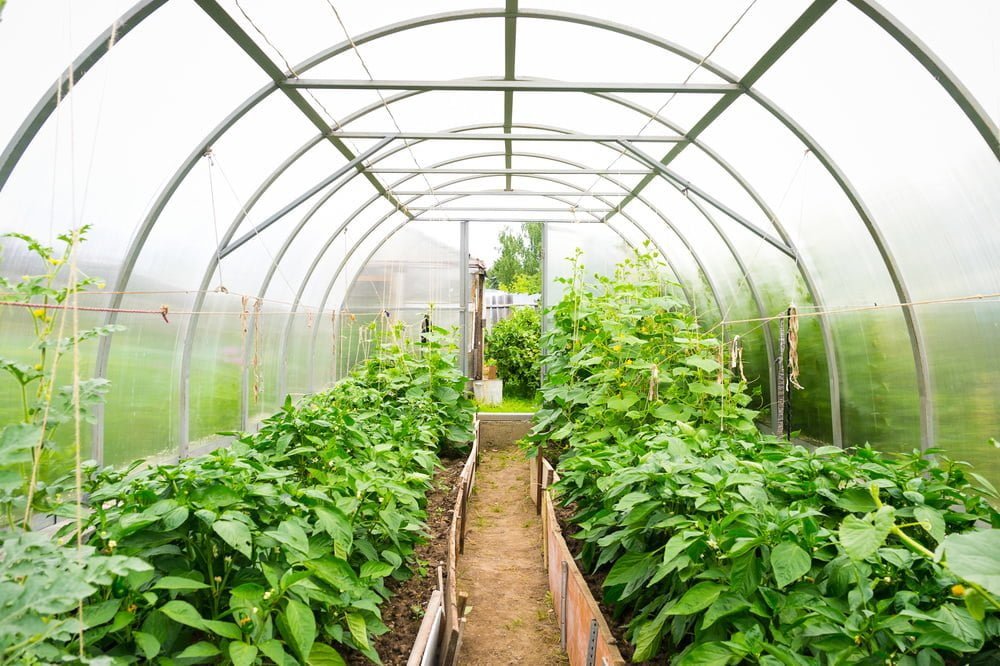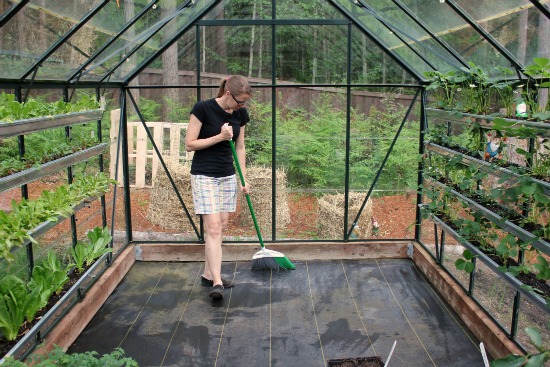To grow vegetables in a greenhouse, start with selecting suitable seeds and preparing the soil. Maintain optimal temperature, humidity, and light conditions for healthy growth.
Growing vegetables in a greenhouse offers numerous advantages, such as extended growing seasons and protection from pests. A controlled environment allows for consistent temperatures and moisture levels, which promote faster and healthier plant growth. Beginners and experienced gardeners alike can benefit from this method.
Many choose to grow a variety of vegetables, including tomatoes, peppers, and lettuce. Understanding the specific needs of each vegetable will maximize yields. With proper planning and care, a greenhouse garden can provide fresh produce year-round, making it a rewarding endeavor for any gardening enthusiast.

Credit: www.motherearthnews.com
How to Grow Vegetables in a Greenhouse : Step by Step Guide
Introduction To Greenhouse Gardening
Greenhouse gardening offers many benefits. It provides a controlled environment for plants. This helps them grow faster and healthier. Pests and diseases are easier to manage inside a greenhouse.
Choosing the right location for your greenhouse is crucial. Look for a spot with plenty of sunlight. Avoid areas with strong winds or heavy shade. A flat area is ideal for easy setup. Ensure good drainage to prevent water accumulation.
Types Of Greenhouses For Vegetable Growing
Cold frames are simple, low-cost structures. They protect plants from harsh weather. These frames help extend the growing season. They are great for starting seeds early.
Polytunnel greenhouses are popular for many gardeners. They have a curved shape that traps heat. This design allows for better air circulation. Polytunnels are versatile and can grow a variety of vegetables.
Glass greenhouses offer excellent light exposure. They provide a sturdy structure for plants. Glass greenhouses maintain a stable temperature. They can be more expensive but last longer.
Essential Tools And Equipment
Growing vegetables in a greenhouse requires some essential tools and equipment. A good watering system helps keep plants hydrated. Options include drip irrigation or overhead sprinklers. Choose a system that fits your greenhouse size.
Temperature control is vital for plant health. Use heaters or fans to manage heat. Thermometers help monitor the environment. Keeping a steady temperature boosts growth.
Soil preparation tools ensure a healthy planting base. A shovel and rake help mix soil and compost. Use a tiller for larger areas. Good soil leads to better vegetable yields.

Credit: millcreekgardens.com
Selecting Your Vegetables
Selecting the right vegetables is key for greenhouse success. Seasonal choices matter a lot. Some vegetables thrive in spring, while others prefer fall. Focus on your local climate for the best options.
Consider space when planning your greenhouse. Some plants need more room than others. For instance, tomatoes require vertical space, while lettuce can grow close together. Choose plants that fit your available space.
Plant compatibility is crucial for a healthy garden. Some plants grow well together, while others do not. For example, carrots and onions make good companions. Avoid mixing beans with onions, as they do not thrive together.
Soil And Planting Techniques
Use a good soil mixture for growing vegetables. Combine peat moss, perlite, and organic compost. This mix provides essential nutrients for plants.
Start seeds using seed trays or pots. Fill them with the soil mixture. Water the seeds gently. Place them in a warm and bright area.
Once seedlings grow strong, it’s time to transplant them. Carefully remove seedlings from trays. Make holes in the greenhouse soil, then place seedlings inside. Cover the roots with soil and water them well.
Climate Control In Your Greenhouse
Managing temperature is key for healthy plants. Use heaters to warm the air in winter. Shade cloth can help reduce heat in summer. Monitor temperatures regularly with a thermometer.
Humidity affects plant growth. Use a hygrometer to check humidity levels. Mist plants or use a humidifier for dry air. Too much humidity can lead to mold.
Ventilation is vital for air circulation. Open vents and doors on warm days. Fans can help move air around. Good airflow prevents disease and keeps plants happy.
Pest Management And Disease Prevention
Identifying common pests is key for successful vegetable growth. Look for aphids, whiteflies, and spider mites. These pests can harm plants and reduce yields. Early detection helps in managing their impact.
Organic control methods are effective and safe. Use insecticidal soap to eliminate pests. Neem oil is another option that disrupts pest life cycles. Introduce beneficial insects like ladybugs to control aphid populations.
Preventive measures keep pests away. Rotate crops each season to disrupt pest habits. Ensure proper spacing between plants for good air circulation. Maintaining cleanliness in the greenhouse also reduces pest habitats.
Harvesting And Maintenance
Harvesting vegetables at the right time is key for great taste. Pick vegetables when they are ripe. Use clean, sharp tools to avoid damage. Always handle them gently to prevent bruising.
After harvesting, post-harvest care is important. Remove any damaged or spoiled vegetables. Store them in a cool, dry place. This helps keep them fresh longer.
Seasonal maintenance for your greenhouse ensures healthy plants. Clean the greenhouse regularly to prevent pests. Check for any broken glass or leaks. Adjust ventilation to keep temperatures stable.

Credit: www.onehundreddollarsamonth.com
Frequently Asked Questions
What Vegetables Grow Best In A Greenhouse?
Leafy greens, tomatoes, peppers, and cucumbers thrive in a greenhouse. These vegetables enjoy the controlled environment, which offers warmth and protection. You can also grow herbs like basil and parsley. Select varieties suited to your climate for optimal growth and yield.
How Do I Maintain Humidity In A Greenhouse?
To maintain humidity, regularly mist plants and use a humidifier. Cover soil with mulch to reduce evaporation. Proper ventilation is essential; open windows or vents when temperatures rise. Monitoring humidity levels with a hygrometer can help maintain the right balance for your plants.
What Is The Ideal Temperature For Greenhouse Vegetables?
The ideal temperature for greenhouse vegetables ranges from 70°F to 80°F during the day. At night, temperatures should be around 60°F to 70°F. Consistent warmth promotes healthy growth and fruit production. Use thermostats and heaters to maintain these temperatures effectively throughout the growing season.
How Often Should I Water Greenhouse Plants?
Water greenhouse plants when the top inch of soil feels dry. Generally, this is about once a week but can vary based on plant type and weather. Ensure proper drainage to prevent waterlogging. Observe your plants for signs of wilting or yellowing to adjust your watering schedule accordingly.
Conclusion
Growing vegetables in a greenhouse offers numerous advantages. With controlled conditions, you can extend your growing season and improve yields. By following the tips outlined in this guide, you can cultivate a thriving vegetable garden. Embrace the journey and enjoy the fresh produce right from your greenhouse.
Happy gardening!
